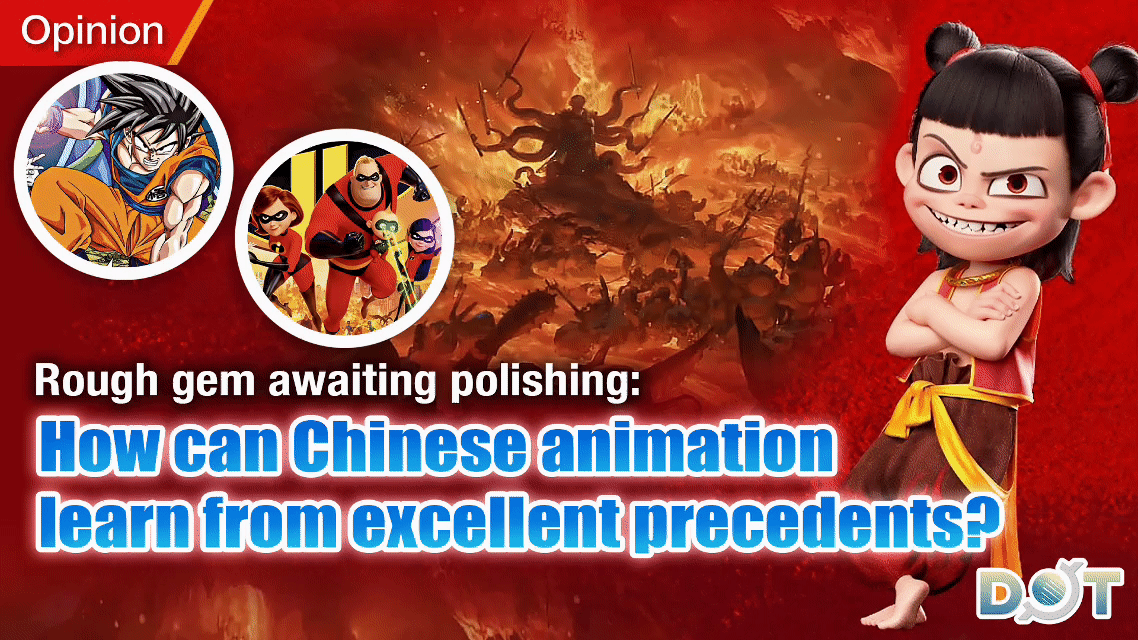
By Darius
After several years, Nezha is once again gracing the big screen. Following the success of the first Nezha film in 2019, many viewers were concerned that the quality of the upcoming sequel may not match the original, leading to a "reputation downfall" and, potentially, hindering the development of the entire industry. However, with box office records of "Nezha 2" being broken repeatedly now, Chinese animation seems to be entering a new phase of opportunity. Yet, compared to nations with well-established animation industries, the rise of China's domestic animation still faces significant challenges.
First, it's important to note that "Nezha 2" is a 3D animated film. Unlike 2D works that transition from comic books to television, 3D animation features character modeling and scene design as its key characteristics. Today, most Chinese animations, including adaptations of online novels into series and films, predominantly use 3D animation. Since the critically divisive "Big Fish & Begonia" in 2016, which failed to meet expectations due to its controversial plot and setting, 2D animated films have rarely appeared on screens. Even high-quality 2D works do not reach a level comparable to that of 3D animated films in terms of quantity and influence.
Moreover, while 2D animation is seen as a more "traditional" medium and may seem less advanced, it requires high production costs. Japan, a leader in this field, has produced iconic 2D animations like "Doraemon," "Detective Conan," and "Dragon Ball," as well as recent hits like "Your Name" and "Suzume." Japan has maintained its excellent tradition, continuously exporting culture worldwide through meticulous production and clever design. China also has historical classics like "Havoc in Heaven" and "Nezha Conquers the Dragon King," but recent 2D works have not succeeded in carrying on this legacy. Many viewers have expressed dissatisfaction, feeling that the current prevalence of low-quality, cheap 3D modeling overshadows the artistry of hand-drawn characters. This aspect could potentially be a treasure to "pick up" in the future.
Additionally, an animated film not only requires outstanding visuals but also needs a solid script, a strong narrative core, and even excellent music. While animated films are generally family-friendly, they are still films; overly dull, or illogical plots can ruin them. "Big Fish & Begonia" is a case of "failure in the gutter," where despite its gorgeous setting and quality visuals, the protagonist's motivations and the plot's development were confusing, negatively impacting audience impressions. Similarly, the influential domestic series "The Legend of Qin" suffered from a decline in quality due to excessively fragmented storytelling in later episodes. Even industry giants like Disney have seen recent works suffer from politically correct adjustments that weakened their plots and logic. However, Disney, MGM, and other Western animation leaders excel in music, with iconic works like "Tom and Jerry" captivating audiences of all ages without the need for dialogue.
Another notable point is that both Western and Japanese animation fans are characterized by their engagement in fan works and secondary creations. While these creations may not strictly adhere to the original, the clash of ideas often sparks new inspiration. In an industry that thrives on imagination and creativity, such exchanges are as crucial to internal development as they are to overall progress. Marvel's comic universe, for instance, is built by thousands of different artists who often create stories in their styles rather than being directly employed by Marvel. Japan boasts PIXIV, a massive platform for fan creations that provides countless individuals the opportunity to showcase their talents.
In my view, the animation industry is not just an industry; it resembles an ecosystem that requires positive interactions among practitioners, policies, and audiences, as well as the accumulation of time. As domestic animation is just starting, having long-term expectations is positive, but it is still essential to solidify the foundation so that we can usher in our own "Cambrian explosion."
Related News:
Overseas trailer: Appreciating classic quotes from 'Nezha 2' in English translation
Behind success of 'Nezha 2:' China's animation industry faces chances and challenges




















Comment